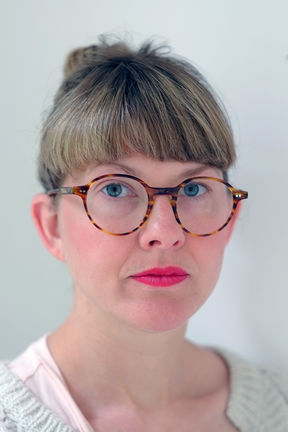Camilla Andersson: ‘Discriminatory norms in society can be renegotiated through design’

What is your research about?
‘Norm-critical design brings to light discriminatory norms that exist in society and organisations. I was introduced to the field during my master's thesis in architecture, after which I worked as an architect for about ten years. But I had a constant feeling that we were not taking responsibility for the world and the environment we were creating. I was frustrated. I wanted to continue working with norm-critical design.
In my dissertation, I looked at norm-critical power theory, which I used to build a foundation for norm-critical design aimed at dismantling power relations. Through empirical research, I show how norms and power relations in organisations can be identified, analysed and challenged.
I explore how strong norms of heterosexuality and male physical strength in the fire and rescue sector discourage women from entering the sector and how these norms can be dismantled through organising work. I also looked at how workers in a female-dominated home care sector for the elderly can reject their stressful work.
In the third project, I used speculative design to show how lessons can be learned from natural processes and at the same time contribute to sustainable development. I designed a biological wastewater recycling system integrated into the façade of an urban apartment building. I wanted to turn people's bio-phobia into an appreciation for the powers and abilities of nature.’
What’s important in it?
‘Both critical and speculative design have been criticised for failing to understand the prevailing power relations and perspectives of feminism and decolonisation. We need both norm-criticism that addresses the prevailing norms and speculative design that looks to the future, analyses structural problems, and brings radical solutions to the climate crisis.
When norms are made visible through design, the power they create can begin to be discussed. Norm-critical design has been developed in Sweden, where norm-critical theory has been used to analyse structural discrimination in schools and other institutions.
Camilla AnderssonWhen norms are made visible through design, the power they create can begin to be discussed."
In my thesis, I showed that norm-critical design can be used to make abstract and complex problems, such as norms and sustainability, easier to understand through the production of tangible prototypes. This can be used to contribute to changes within institutions and organisations.’
What can it lead to?
‘The dissertation is my contribution to strengthening norm-critical design as an academic discipline. On a personal level, I find it hopeful that the concrete nature of critical and speculative design makes radical proposals seem acceptable and even attractive for people when tried in workshops and exhibitions. For example, a biological wastewater treatment on the facade of your house is a radical, yet very feasible, process for treating our wastewater.
In the modern system of power, norms play a very fundamental role. Power is embedded in social control and social norms. Philosopher Michel Foucault calls institutions such as hospitals "micro-governmental institutions". In my work, I examine power structures in home care for the elderly, which can be considered such a micro-governmental institution. When we understand institutions such as the fire department and elder care as part of a larger power structure, the need for examining norms and oppression within them becomes clear.
In my thesis I have focused on the development of norm-critical theory and norm-critical research practices to consolidate norm-critical design as a field. In coming projects, I would like to focus more on the practical implementation in organisations and how to support social change. I would also like to focus more on posthumanist perspectives and Rights of Nature.’
Andersson defended her thesis ‘Materializing Norms. Norm-Critical and Speculative Explorations in Design’ in Aalto University February 10, 2023.
Text: Marjukka Puolakka
Read more news

Business & economics and computer science ranked in top 100 globally
The Times Higher Education ranking measures universities with 18 indicators, including international research and citations
Unite! Seed Fund 2026: Open for applications
The 2026 Unite! Seed Fund call is officially open, offering funding across three strategic lines: Student Activities, Teaching and Learning, and Research and PhD. Deadline for applications is 20 March 2026.
Apply now: Unite! Seed Fund 2026 - Student Call
The Unite! Seed Fund call for 2026 is now open for students. Apply now for up to €20,000 per project, involving at least two Unite! Universities. Deadline for applications is 20 March 2026.






